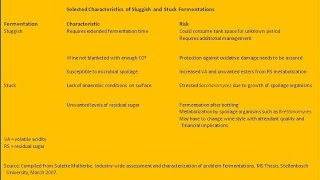The Prosecco DOC was first awarded in 1969 and was restricted to wines produced in the Conegliano-Valdiobbadene region. Growers felt that the brand was under attack by "imitators" using just the grape variety and moved to isolate those competitors by changing both the rules and the venue of the game. Prosecco growers agitated for, and gained regulatory acceptance of: (i) extension of the Prosecco DOC to cover all of Friuli-Venezia-Giulia and approximately two-thirds of Veneto; (ii) promotion of the original Prosecco DOC to DOCG status; (iii) changing the name of the source grape from Prosecco to Glera; and (iv) restricting the use of the name Prosecco only to Glera sparkling wines produced within the delimited zones. The growers felt that these actions would serve to protect their territory, the brand, and the quality of Prosecco. The regulations authorizing these actions came into law in 2009.
The Grape(s)
Prosecco is primarily made from the Glera (formerly Prosecco; also known as Prosecco Bianco and Proseko Sciprina) grape variety, a native of northeast Italy which has been used to produce wines since Roman times. This late-ripening, thick-skinned variety has greenish-yellow berries which evolve to a yellow-gold color as the grapes ripen. The grapes are high in acid and have a white peach aromatic profile, qualities which render them eminently suitable for the production of sparkling wines.
Glera is primarily used in the production of fizzy and sparkling wines but there are a few examples of still Glera wines around. In addition to Glera, Prosecco wines can contain as much as 15% of other grape varieties. The most oft-used supplements are Verdiso, Branchetta, Perera, Glera Lunga, Pinot Bianco, Pinot Noir, Pinot Grigio, and Chardonnay.
The Production Areas
Prosecco DOC
Prosecco DOC wines are authorized for production in Friuli-Venezia-Giulia and Veneto (provinces of Treviso, Belluna, Padova, Venezia, and Vicenzia). Within the broader Prosecco DOC, there are two sub-zones: DOC Treviso Prosecco and Prosecco di Trieste. These sub-zones cover Prosecco made within these two provinces and wines made therein can so indicate on their labels. Prosecco wines made in other provinces cannot carry the province name on the labels.

Source: prosecco.it
Prosecco DOCG
There are two separate Prosecco DOCG zones, both falling within the borders of the province of Treviso. The first, and having the greatest repute, is Prosecco di Conegliano-Valdobbiadene. This zone is approximately 50 km from Venice and 100 km from the Dolomites. It runs east to west from the plains to the foot of the Alps and incorporates the 15 hill communities that lie between Conegliano and Valdiobbadene. Approximately 6100 ha of vineyards are deployed on south-facing slopes that range between 50- and 500-meters high.
An area within the municipality of Valdiobbadene called Cartizze is considered the region's cru. This 106-ha area has a mild microclimate and a varied soil to include moraine, sandstone, and clay components. The vineyards are positioned on south-facing slopes and have excellent drainage.
 |
| Source: prosecco.it |
The second DOCG zone is Colli Asolani/Asolo and is located in the Montello e Colli Asolani wine region. It encompasses a 5-mile-long ridge of gently rolling hills running between the towns of Cornuda and Asolo. The best vineyards are found on south-facing slopes where the gentle gradients and loose soil combine for excellent drainage and optimal sunlight exposure.
 |
| Source: colliasolani.it |
A subsequent post will cover Prosecco viniculture and viticulture.
©Wine -- Mise en abyme























































